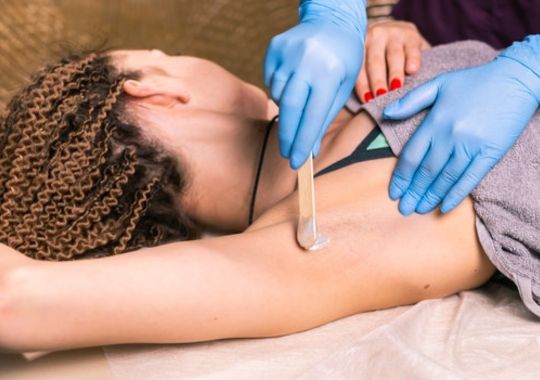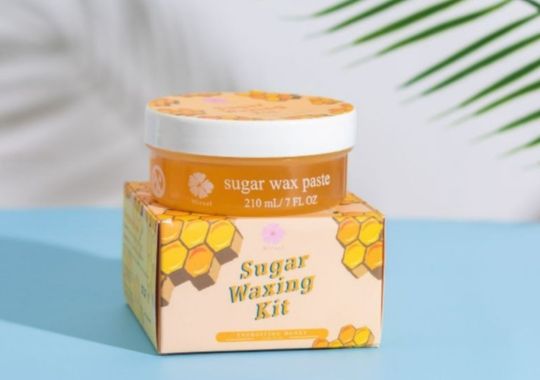When it comes to hair removal, waxing is a popular choice for its long-lasting results. But with so many waxing methods available, it can be challenging to determine which one will provide the longest-lasting effects. In this article, we will discuss which waxing lasts longer, explore their durability, and provide tips on how to extend the results between waxing sessions.
As Amazon affiliates we may earn a commission if you purchase a product at no cost to you

Watch this amazing video.
Understanding the Hair Growth Cycle
Before we delve into the various waxing methods, it's essential to understand the hair growth cycle. Hair undergoes three stages of growth: the anagen phase (active growth), the catagen phase (transition), and the telogen phase (resting). Approximately 90% of hair follicles are in the anagen phase, while the remaining 10% are either in the catagen or telogen phase.
During a waxing session, hair is removed from the root, which means that only the hairs in the anagen phase can be effectively removed. However, not all hairs on your body will be in the same growth phase simultaneously. This is why you may notice regrowth sooner in some areas compared to others.

Comparing Waxing Methods
Now, let's compare different waxing methods and their longevity:
1. Traditional Waxing
Traditional waxing involves the application of warm or hot wax to the skin, which is then removed with cloth strips. This method is suitable for larger areas of the body, such as legs and arms.
Durability: Traditional waxing can provide results that last up to six weeks, depending on individual hair growth patterns. However, it's important to note that hair regrowth may become noticeable sooner in some cases.
2. Hard Waxing
Hard waxing , also known as stripless waxing, involves the application of a thick layer of wax directly to the skin. Once the wax hardens, it is removed without the use of cloth strips. Hard waxing is particularly effective for smaller, more sensitive areas like the face, underarms, and bikini line.
Durability: Hard waxing can provide results similar to traditional waxing, lasting up to six weeks. However, it may be more accurate at removing shorter hairs, resulting in a longer-lasting smoothness.
3. Sugar Waxing
Sugar waxing is a natural alternative to traditional waxing. It involves the application of a paste made from sugar, lemon, and water to the skin. The paste is then removed in the direction of hair growth, minimizing the risk of hair breakage.
Durability: Sugar waxing generally provides results that last up to six weeks. Some individuals may find that sugaring lasts slightly longer than traditional waxing due to the reduced risk of hair breakage.
4. Threading
Threading is a hair removal technique that originated in South Asia. It involves using a twisted thread to remove hair from the root. Threading is commonly used for shaping eyebrows and removing facial hair.
Durability: Threading can provide results that last anywhere from two to six weeks, depending on the individual's hair thickness and growth rate.
5. Epilating
Epilating involves using an electrical device called an epilator to remove hair from the root. The device plucks multiple hairs simultaneously as it glides across the skin. Epilating is suitable for larger areas of the body, such as legs and arms.
Durability: Similar to waxing, epilating can provide results that last around three to four weeks before regrowth occurs. It is particularly effective at removing shorter, finer hairs that may be missed by waxing.
Factors Affecting Hair Regrowth
Several factors can affect the rate and texture of hair regrowth after waxing:
1. Hormonal Balance
Hormones play a significant role in hair growth, and imbalances can affect the rate and texture of regrowth. Maintaining a healthy hormonal balance can result in stronger, healthier hair.
2. Diet
A balanced diet rich in nutrients like fish, vitamin C, zinc, biotin, niacin, and iron can nourish hair growth and promote its overall health.
3. Genetic Makeup
Each individual's genetic makeup can influence the rate and appearance of hair growth. Hair growth patterns may vary even among friends or family members.
4. Waxing Routine
Consistently sticking to a waxing routine can potentially make hair grow back thinner and slower over time. Regular waxing weakens the hair follicles, resulting in reduced hair growth.
5. Skin Care
Proper skin care between waxing sessions can help extend the results. Regular exfoliation and moisturization can prevent ingrown hairs and keep the skin smooth and healthy.

Tips for Extending Waxing Results
To maximize the longevity of your waxing results, consider the following tips:
- Follow a consistent waxing schedule: Aim to wax every three to four weeks, depending on your hair growth patterns and the area being waxed.
- Avoid shaving in-between appointments: Shaving can disrupt the hair growth cycle and undermine the effectiveness of waxing. Resist the temptation to shave and allow your hair to grow to the optimal length for waxing.
- Use hair growth minimizer products: Some products, like those containing Narcissus Tazetta Bulb Extract, can help slow down hair regrowth between waxing sessions. It's essential to do a patch test or consult an expert before using such products to avoid potential allergic reactions.
- Exfoliate regularly: Gentle exfoliation with a body brush or scrub can prevent ingrown hairs and promote smooth, even regrowth.
- Moisturize regularly: Keeping the skin hydrated can prevent dryness and hair breakage. Choose a moisturizer that doesn't contain oils that could coat the skin and trap growing hairs.
- Avoid picking at ingrown hairs: Picking at ingrown hairs can lead to scarring and further skin irritation. Instead, use products specifically designed to treat and prevent ingrown hairs.
- Consider professional waxing: While DIY waxing may be tempting, leaving waxing to the professionals can ensure proper technique and minimize the risk of skin damage or missed hairs.
- By following these tips and maintaining a consistent waxing routine, you can prolong the results of your waxing sessions and enjoy smooth, hair-free skin for longer periods.
Recommended Article

Frequently Asked Questions FAQs
Which waxing lasts longer, strip waxing or hard waxing?
Hard wax is often considered to last longer than strip wax because it can more effectively grip shorter and coarser hairs, leading to a cleaner removal from the root. This means it can potentially keep the skin smooth for a longer period, as the hair takes more time to regrow.
How can I ensure my waxing results last as long as possible?
To extend the longevity of your waxing results, exfoliate the skin before waxing to remove dead skin cells and lift hairs for a cleaner wax. After waxing, avoid tight clothing and keep the area moisturized. Regular waxing can also train your hair to grow back slower and finer over time.
Does the area of the body being waxed affect how long the results last?
Yes, the body area can affect how long waxing results last. For instance, hair growth cycles vary in different areas, so facial hair may regrow quicker than hair on the legs or arms. Moreover, the fineness or coarseness of hair in different areas can also impact the duration of smoothness post-waxing.
Conclusion
When it comes to waxing, the duration of the results can vary depending on several factors, including the waxing method used, individual hair growth patterns, and personal care routines. Traditional waxing, hard waxing, sugar waxing, threading, and epilating are all effective methods for hair removal, with varying durations of effectiveness.











